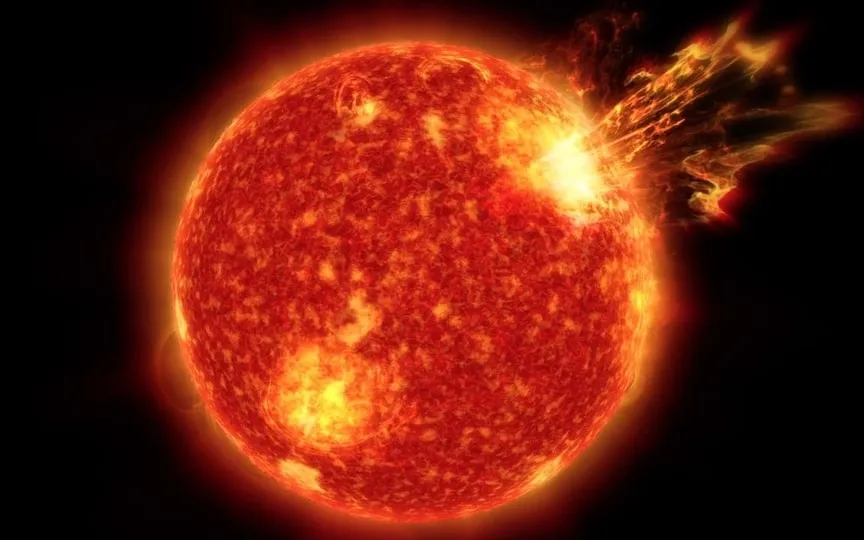NASA Records Explosion of Giant Solar Flare Heading Toward Earth, Possible Solar Storm Ahead
According to recent reports, October is expected to have the same level of solar activity as the previous month. Currently, there are eight active sunspot regions on the side of the Sun facing Earth, and any of these regions could potentially cause dangerous coronal mass ejections (CME) if they were to explode. On October 3, one such explosion occurred, resulting in a solar flare and the ejection of a massive CME towards our planet. The National Oceanic and Atmospheric Administration (NOAA) predicts that this CME will reach Earth on Saturday, October 7. Additionally, NASA has shared a video capturing the moment of the explosion and the subsequent release of the CME, which is quite alarming.
According to a report by SpaceWeather, “NOAA forecasters say a CME could jolt Earth’s magnetic field on Oct. 7. It exited the Sun on Oct. 3, propelled by an explosion near the sun’s northeast. A glancing blow, if it occurs, could cause a small G1-class geomagnetic storm.”
If you’d like to see a video of the moment courtesy of the NASA Solar Dynamics Observatory, you can do so here.
Fears of a solar storm plague the Earth
While a solar storm is expected to hit Earth this weekend, a recent report from Space Weather Live has shown that small solar storm-like conditions are currently occurring. According to it, the solar winds hit the Earth at a speed of 440 kilometers per second. This has raised the kp index to 5, which sets the level required to call the event a geomagnetic storm.
As such, the northern lights can be seen at higher latitudes, particularly around Canada and the United Kingdom. It is not known what triggered the solar storm, but currently no evidence of a CME has been found.
How NOAA’s DSCOVR satellite observes the sun
NOAA monitors solar storms and the Sun’s behavior with its DSCOVR satellite, launched in 2016. The returned data is then run through the Space Weather Prediction Center and a final analysis is prepared. Various measurements are made of the temperature, speed, density, degree of orientation and frequency of solar particles.




